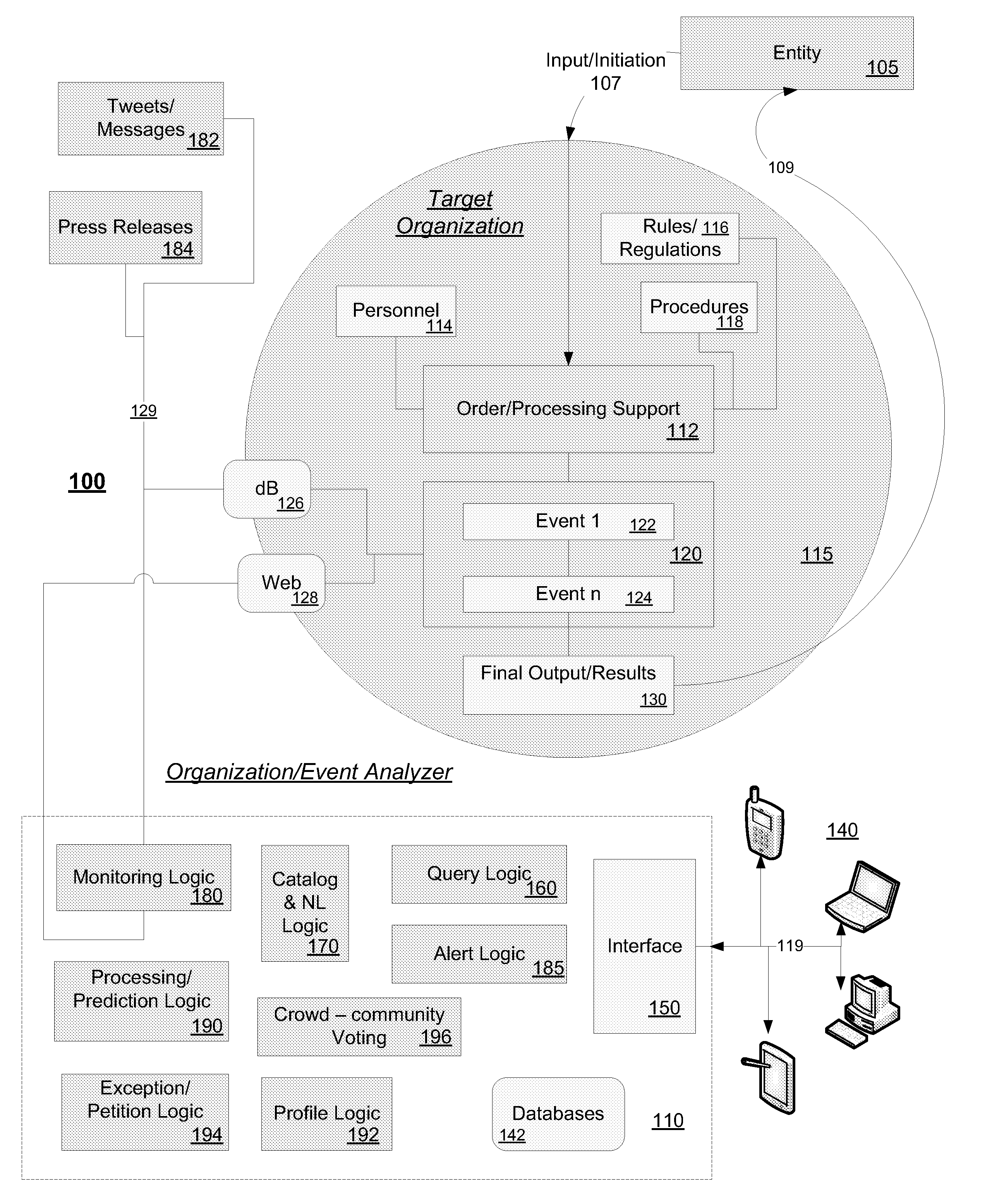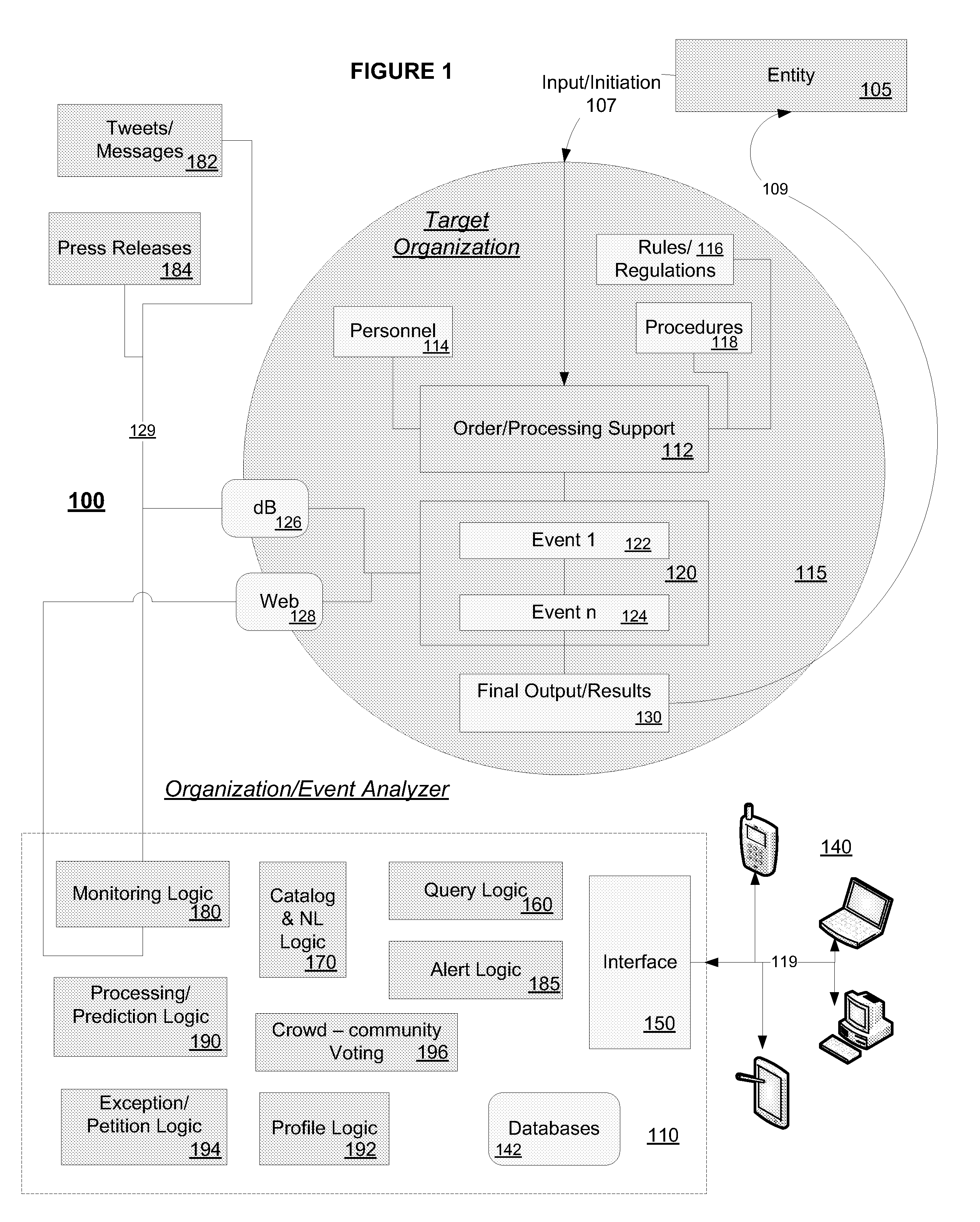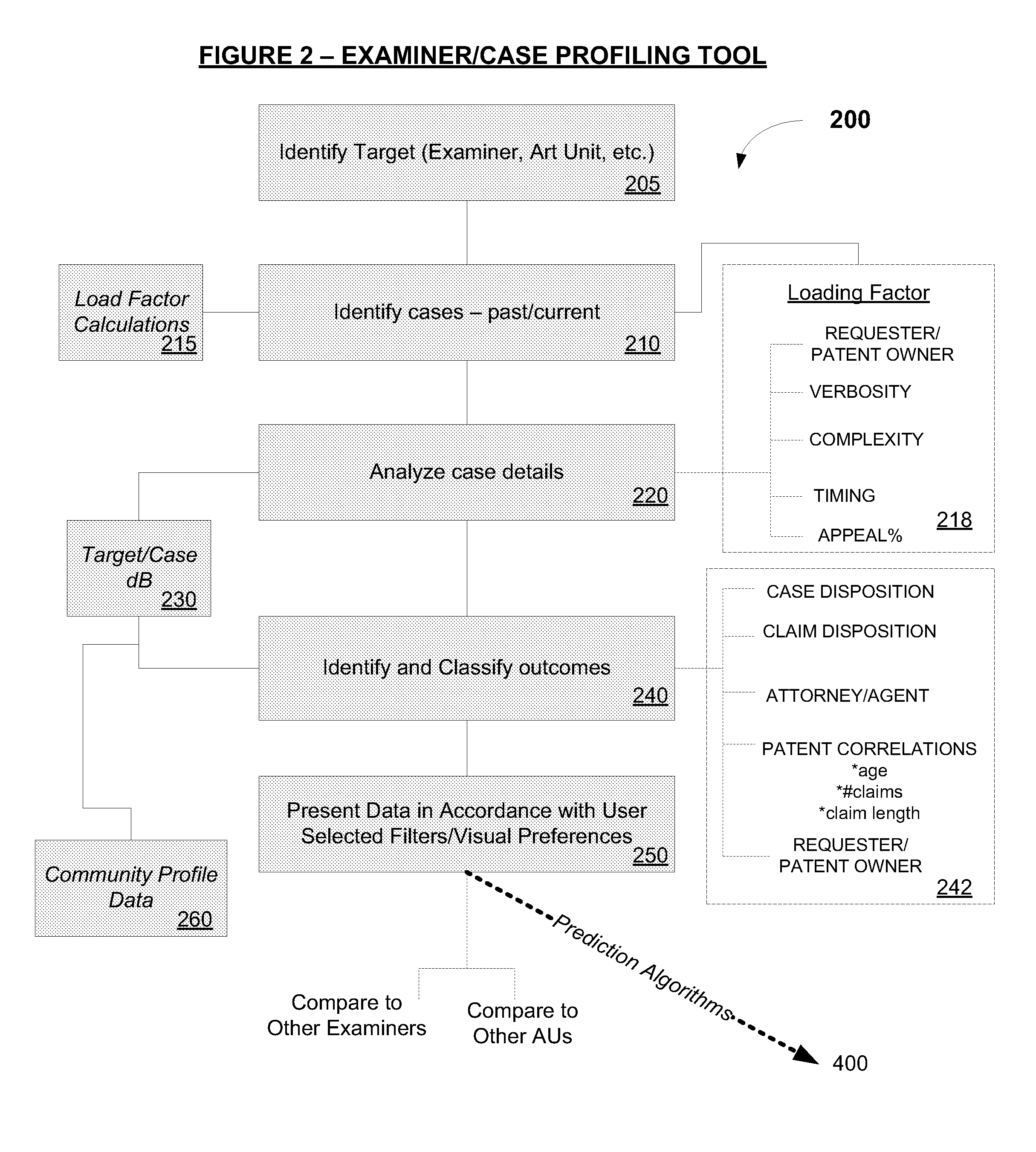System & Method For Predicting Outcome Of An Intellectual Property Rights Proceeding/Challenge
a technology of intellectual property and system & method, applied in the field of automatic electronic system tools and methods, can solve the problems of inability to conduct inspection or review of cases, lack of electronic database accessible for general public to perform conventional search, and lack of case inspection operations
- Summary
- Abstract
- Description
- Claims
- Application Information
AI Technical Summary
Problems solved by technology
Method used
Image
Examples
example # 6
[0159]Example #6: Patent—this prediction tool can look at a target patent, and, based on its characteristics, determine a potential outcome and timing for a resolution. As is well-known, patents can be analyzed with respect to a number of different characteristics, including general technology area, specific classification, specification word content, claim wording / content, inventor pedigree, assignee name, priority date, citations, prior art cited, underlying Examiner, and many other factors known in the art. Using these characteristics the system can compare the target patent against all (or some selected group) of patents which have been subjected to reexamination to determine the probability of success, timing, etc. It should be noted that the outcomes can be specified with different degrees of granularity, so that for example, specific target claims can be examined within the target patent, along with the patent as a whole.
[0160]The data predictions can be used, of course, in a...
PUM
 Login to View More
Login to View More Abstract
Description
Claims
Application Information
 Login to View More
Login to View More - R&D
- Intellectual Property
- Life Sciences
- Materials
- Tech Scout
- Unparalleled Data Quality
- Higher Quality Content
- 60% Fewer Hallucinations
Browse by: Latest US Patents, China's latest patents, Technical Efficacy Thesaurus, Application Domain, Technology Topic, Popular Technical Reports.
© 2025 PatSnap. All rights reserved.Legal|Privacy policy|Modern Slavery Act Transparency Statement|Sitemap|About US| Contact US: help@patsnap.com



